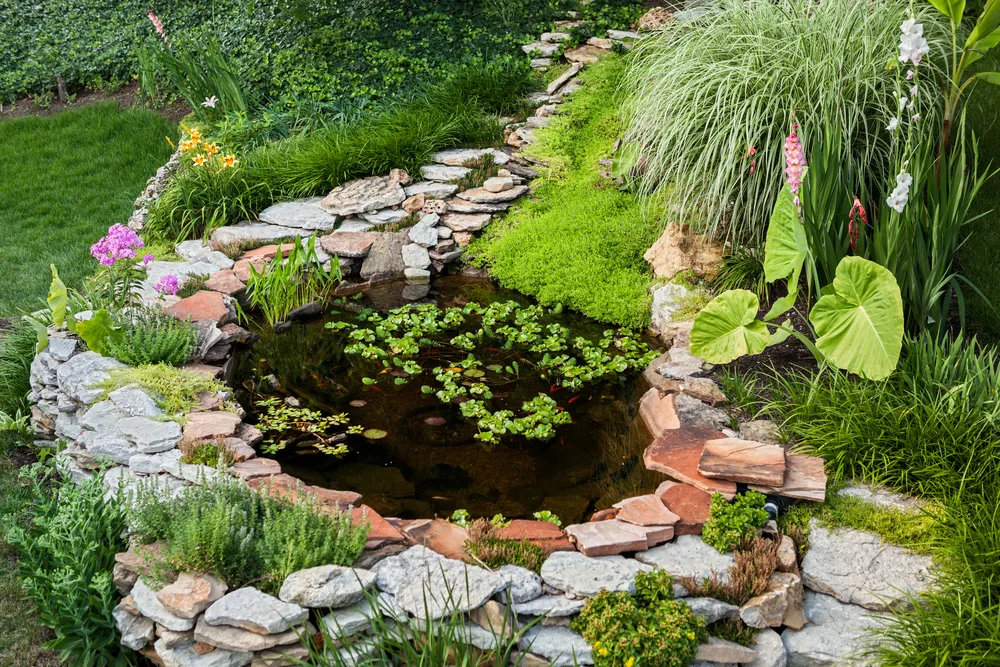
Ponds and water features add a unique aesthetic to any garden. If you’ve always had one, or if you’re finishing up the last touches to your new feature, you’ll no doubt want to add some plants. If you’re still on the fence about adding one, we’ve got 13 Reasons to Install a Pond or Water Feature.
Not only are aquatic plants great for gardeners that thrive on trying new things, but they’re also important for your garden too. That’s because they keep ponds healthy by managing the ecosystem. Whether you’ve got a small water feature or a booming pond, there are plants to suit any need or aquatic environment.
From submerged to floating to border pond plants, there is a plant for any pond and gardener alike.
Pond Plant Tips
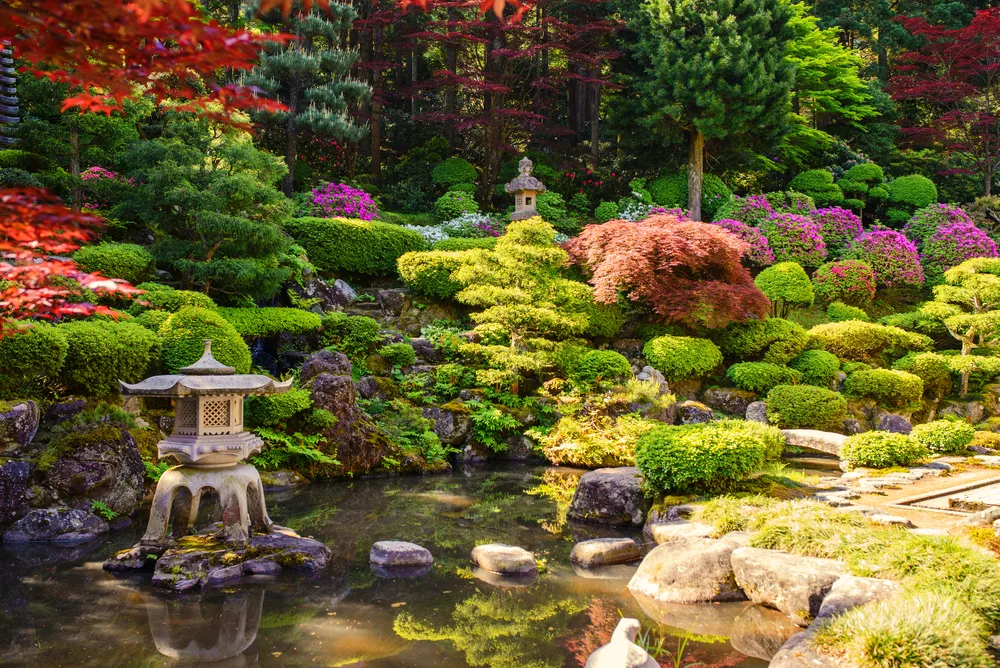
Before we get into the many plants for your oasis, we need to catch up on a few pond plant care tips and tricks.
Firstly, you’ll want to ensure your environment is suited to your pond plants. Most pond plants enjoy basking in the sun, thriving in at least 6 hours of sunlight a day. Fresh, natural water is the best to use in your pond. These plants won’t flourish if you use normal tap water, which is filled with chlorine. Opt for freshwater or rainwater. You’ll also want to install some sort of pump system to keep the water moving.
Secondly, a common mistake is not considering how big a mature plant may become. You don’t want to smother your pond or plants. Before you go out and buy a bunch of aquatic plants, make sure they’ll fit in your pond or water feature first.
You’ll also need to check the type of aquatic plant you’re getting. Some are floating plants that don’t need any soil as their roots absorb nutrients from the water.
Others are deep-water plants. You’ll need to pot these, then sink the pots to the desired depth. Submerged plants are, as the name suggests, fully submerged in the water. You also have a choice of marginal plants that enjoy soil just as much as water. Their roots don’t have to be in water, but they won’t kill the plant if they are.
And of course, there are bog plants. These plants are native to bogs or swamps and thrive in the wettest conditions.
Because it’s a feature, make sure to dress it up like one. Opt for a variety of plants to create a diverse ecosystem. Different colors and textures also catch one’s eye, making your feature more visually appealing. But, always consider your environment first and only choose plants that suit your climate and conditions to get the most out of your plants.
1. Creeping Jenny
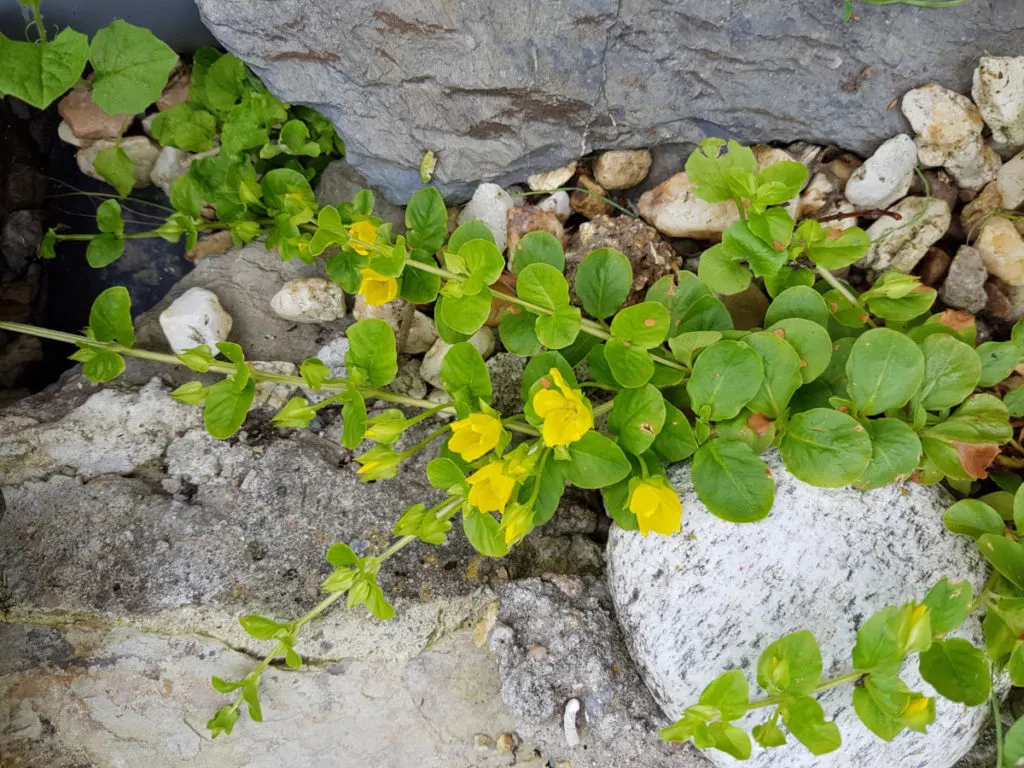
The first plant on this list is the Creeping Jenny. Mainly grown as ground cover, Creeping Jenny makes a great pond plant. It creates a striking image with its bright green foliage. It’s also a great filler plant for rockier water features, or looks just as good at the edge of your pond. Its creeping leaves grow quickly and can spread about 18 inches.
You’ll always have a spectacle in your pond with Creeping Jenny plants, no matter the season. Even during the coldest months, you’ll be treated to its stunning green leaves.
Creepy Jenny does best in USDA hardiness zones 4-10, needing full sun to partial shade. This plant grows best in shallow water and can grow to a height of four to six inches. As winter approaches, flowers and some leaves die off. Prune these before they litter your pond with too much organic matter.
2. Pickerel Rush
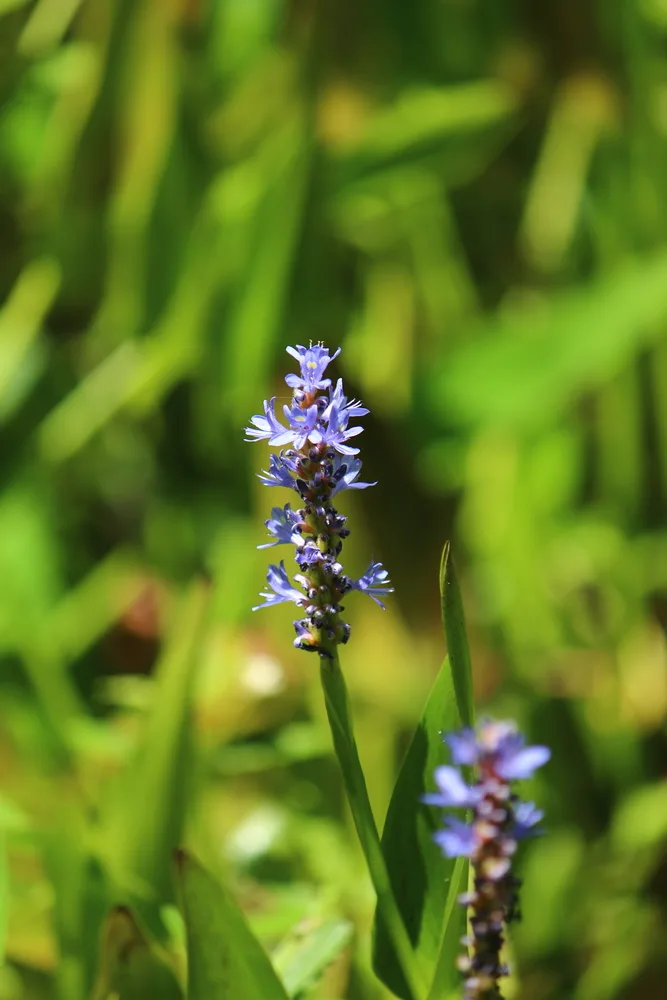
This plant tends to get a bad rap. Considered a weed, it tends to spread to where it’s not wanted. But, this elegant flowering plant makes a great addition to any pond. Its interesting purple, pink or white flowers sit atop tall, sturdy yet slim stems, adding height and character to the edge of ponds. Best of all, they’re easy to care for.
They thrive in a wide range of hardiness zones, 3-10, flourishing in almost all conditions (so long as it’s not grown in full shade or subjected to drought). Pickeral Rushes should be planted in a deep pot, placed in your pond. Add gravel to the top of your soil to stop it from floating away in your pond.
3. Cardinal Flower
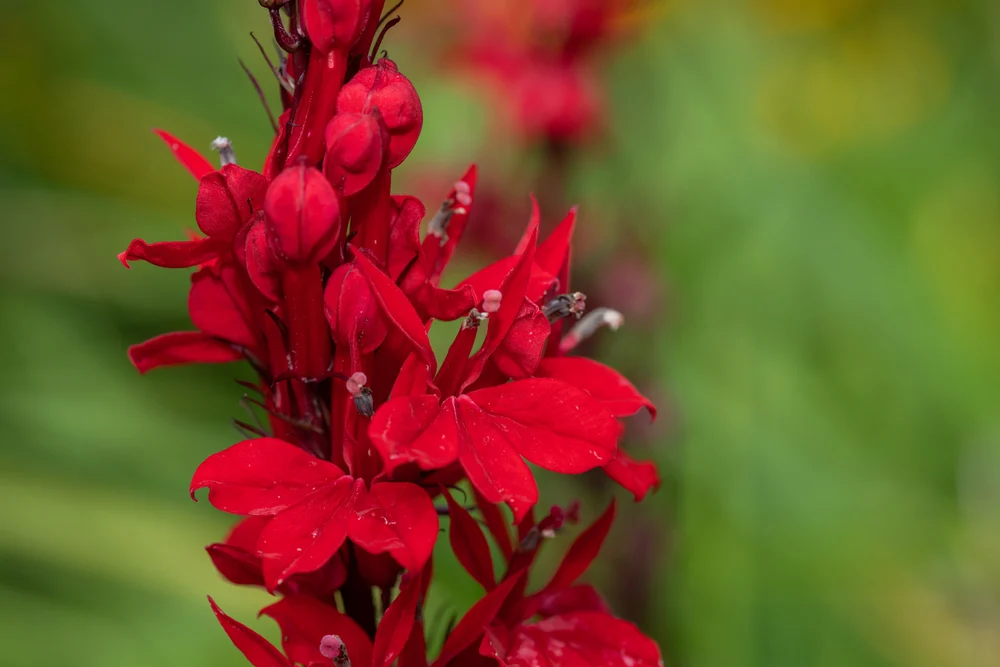
When it comes to ponds, Cardinal Flowers are a no-brainer. This easy-to-care-for perennial grows in almost any condition, thriving as long as its roots are constantly wet. Not only that, but their striking colors make it a must for feature ponds and landscaping enthusiasts.
The Cardinal Flower has gorgeous red flowers that stand out in any garden. They’re appealing to the eye, and to a number of pollinators, including hummingbirds.
Cardinal flowers grow best in USDA zones 5-11, in full sun with some shade tolerated. It’s best planted in a deep pot, which should be submerged. If you’re wanting this flower as a marginal plant, you should plant it in about two inches of soil.
4. Water Lettuce
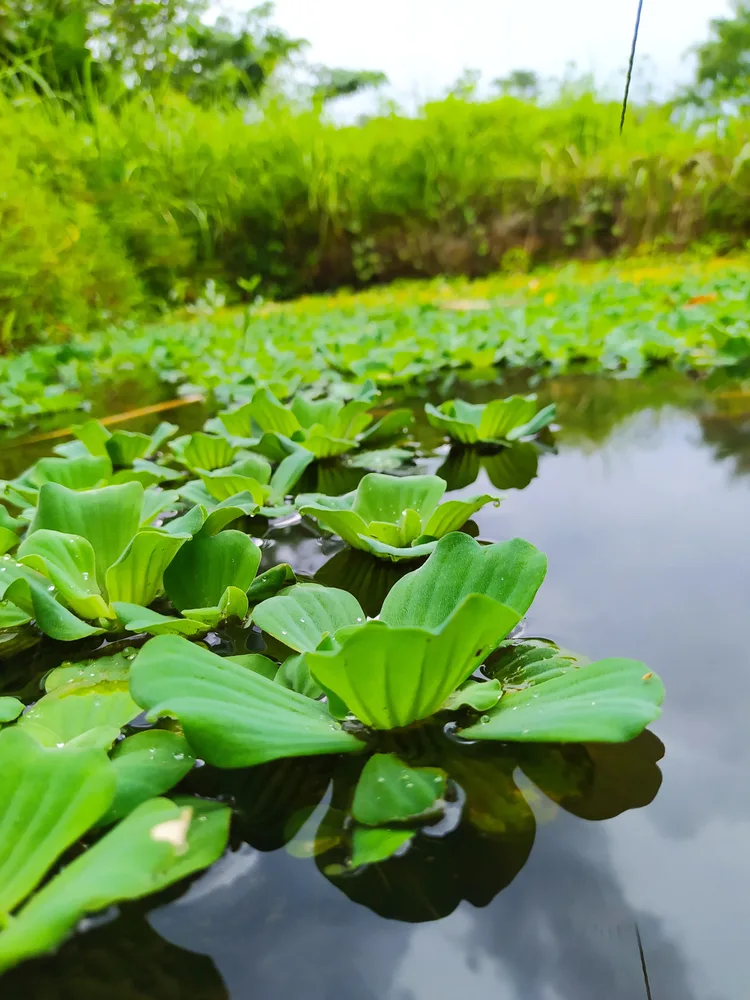
For those looking for interesting floating pond plants, look no farther than Water Lettuce. This perennial evergreen will satiate all green lovers’ needs. It creates a carpet of interesting green hues, making it a go-to pond plant. Water Lettuce has small purple blooms that stand out amongst the green.
It’s considered a weed in certain areas, and can easily spread to cover and smother smaller ponds. If you’re willing to control its growth, water lettuce is a great choice, especially for shallower ponds. You’ll want to remove a few plants during your maintenance routine to keep it under control.
Water lettuce grows best in USDA zone 10, in water that’s slightly acidic and hard.
5. Mosaic Plant
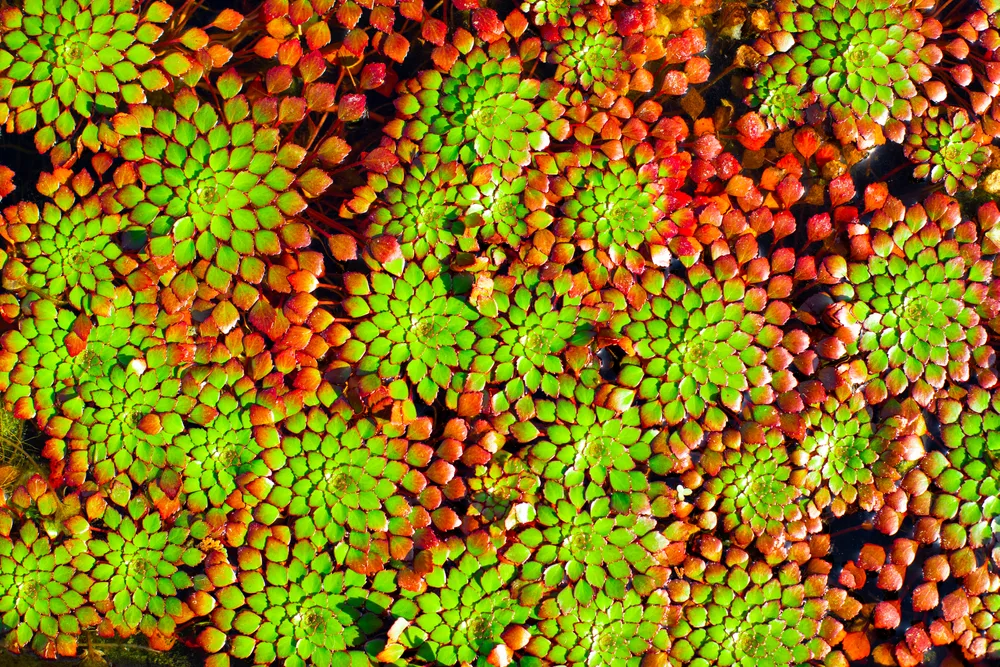
Another floating aquatic plant to consider is the Mosaic Plant. This pond plant forms part of the primrose family and has a few names – water primrose and mosaic flowers are just two.
It gets its name from oddly shaped leaves, which (you guessed it) look like mosaic tiles. These diamond-shaped leaves are green and red, stunning in their own right. But in summer you’ll also love the yellow cup flowers that add some life to your pond. If you’ve got fish in your pond, the mosaic plant also provides great cover for them to hide under.
Mosaic plants are tropical plants, growing best in hardiness zones 8-11. Avoid them if you live in cooler climates. They love the full sun and some shade, needing water that has a pH range of about 5 to 7.5.
6. Blue Iris
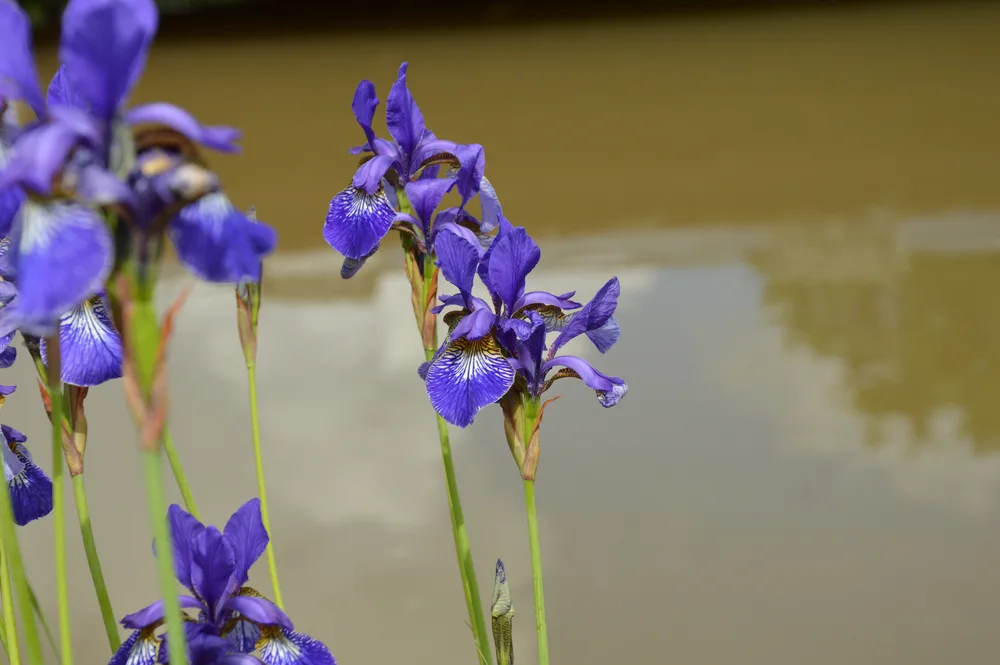
The Blue Iris is another landscaping favorite. They bloom as soon as spring hits, creating a stunning image with its large flowers. These blooms range from light blue to purple – a true marvel to add to any pond.
They grow to approximately 20-30 inches tall, thriving in shallow waters. It’s the perfect marginal plant. Blue Iris does tend to spread though, so be aware. You may want to plant them in a pond basket to keep them under control.
The Blue Iris thrives in a wide range of hardiness zones, tolerating many climates (USDA zones 3-9). They love the full sun, but in hotter areas, they do appreciate some shade.
7. Japanese Sweet Flag Grass
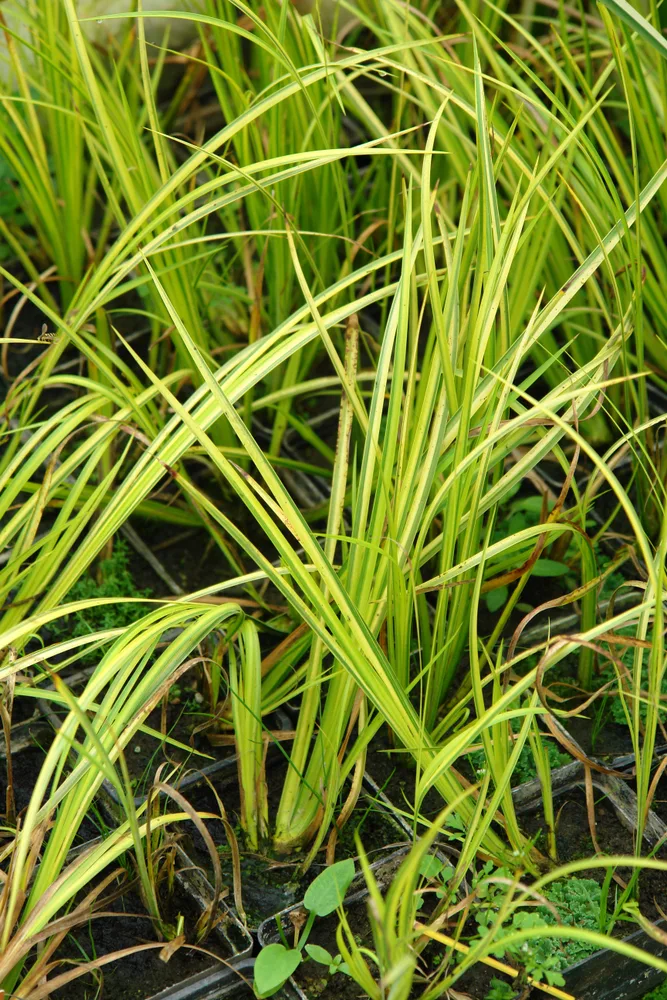
Ornamental grasses are common for many gardeners looking to spruce up smaller areas. It’s no different for ponds and water gardens.
Japanese Sweet Flag Grass (Acorus gramineus Ogon) is the perfect marginal plant. Whether partially submerged or perked up along the edge of your pond, this plant won’t disappoint.
Japanese Sweet Flag Grass grows from three inches to three feet tall. This plant grows best in USDA zones 6-9 and can grow in full sun or part shade.
As long as it’s always wet, Japanese Sweet Flag Grass stays healthy and perky. It can spread easily once established, so keep an eye out to control its growth. Consider planting it in a container and submerging it if you’re concerned about it taking over.
8. Water Lily
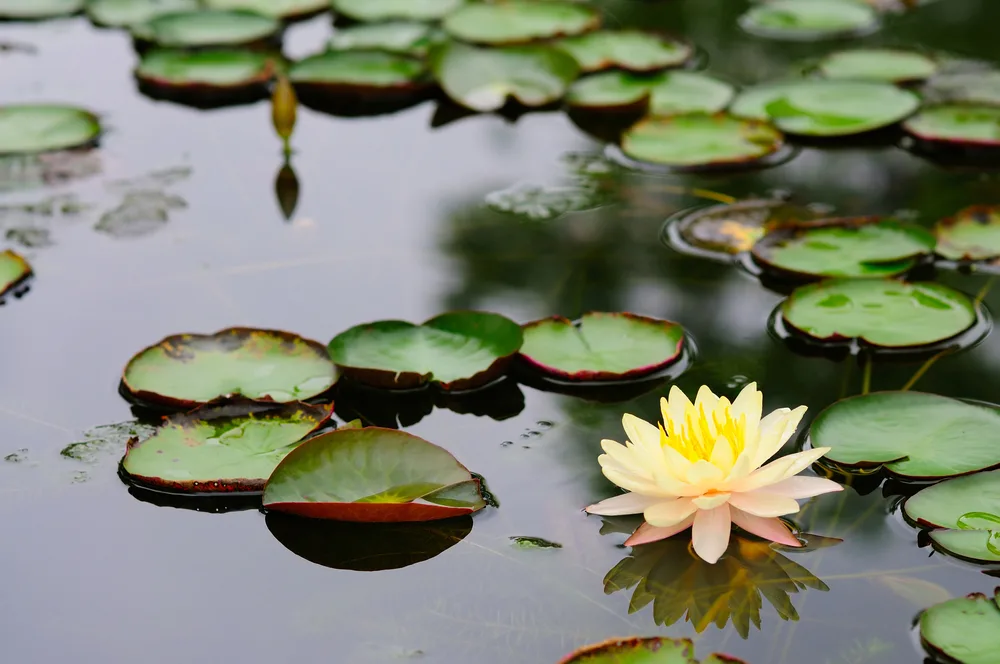
We of course couldn’t leave Water Lilies off this list. This is a treasured plant among aquatic plant gardeners. If they’re the reason you’re adding a pond or water feature to your garden, I don’t blame you.
Water Lilies are easy to grow and reward gardeners with sweet, beautiful blooms. They’re best planted in spring, growing and taking hold quickly. There are also several types of Water Lilies to consider, ensuring you are spoiled for choice.
Some mistake Lotus for Water Lilies. While they’re very similar, there are a few differences. Lotus, for one, grows much slower and isn’t as wide as the Water Lily. Both, however, thrive in similar climates and conditions (USDA zones 4-10).
Plant your lilies in aquatic baskets with topsoil. You may want to line your baskets with some fabric to keep the soil in the basket. Enough sunlight is key in getting your lilies to flower. They need six hours of sunlight to truly thrive.
As easy as they are to grow, placing water lilies requires a bit of care. You’ll want to consider the depth of your baskets or pots to keep the plants happy. As they mature, you’ll need to lower the water baskets. New Water Lilies need to be placed around four inches below the surface. Once they’ve matured, they should be no deeper than 18 inches.
You can also consider Water Lilies for water features, like whiskey barrels. Be sure to opt for dwarf varieties though, or else they’ll be smothered in the small space. This is the case for most floating plant varieties.
9. Bladderwort
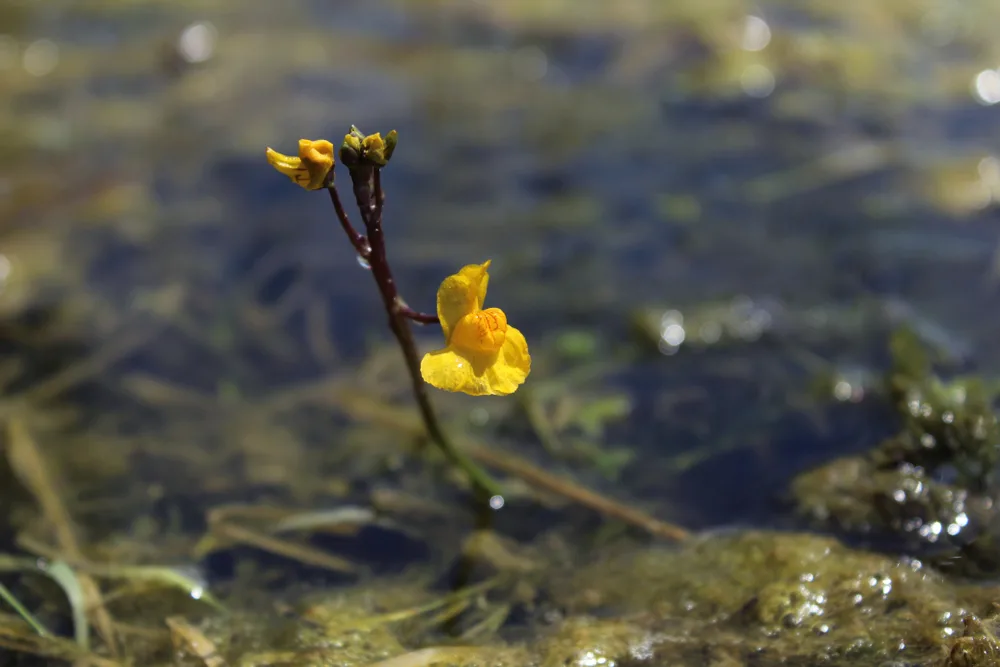
For those willing to try something outlandish, Bladderworts are a great option. These aquatic plants can be submerged. They do produce, pretty yellow orchid-like flowers though, sticking up past the water.
Why would this choice be outlandish, you may ask? Well, bladderworts are carnivorous plants. Before you scream and run away, they’re not as scary as you may think, and only catch prey out of sight, below the water.
Bladderworts have the most complex trapping mechanism out of all the carnivorous plants. All the trapping takes place beneath the water. The trap is made up of mutated leaves that look like bladders. These bladders have trigger hairs that, when touched by mosquito larvae or other water insects, open a ‘trapdoor’. The prey is attracted to the sweet substance that lines the trapdoor, and when inside, they become trapped. Digestion begins immediately.
Not only are they interesting, but they’re relatively easy to care for. They grow in most conditions, thriving in zones 4-11. They love plenty of sunlight, with only a handful of varieties enjoying some partial shade. They’re best in shallower ponds or planted in containers for deeper ones.
10. Pitcher Plant
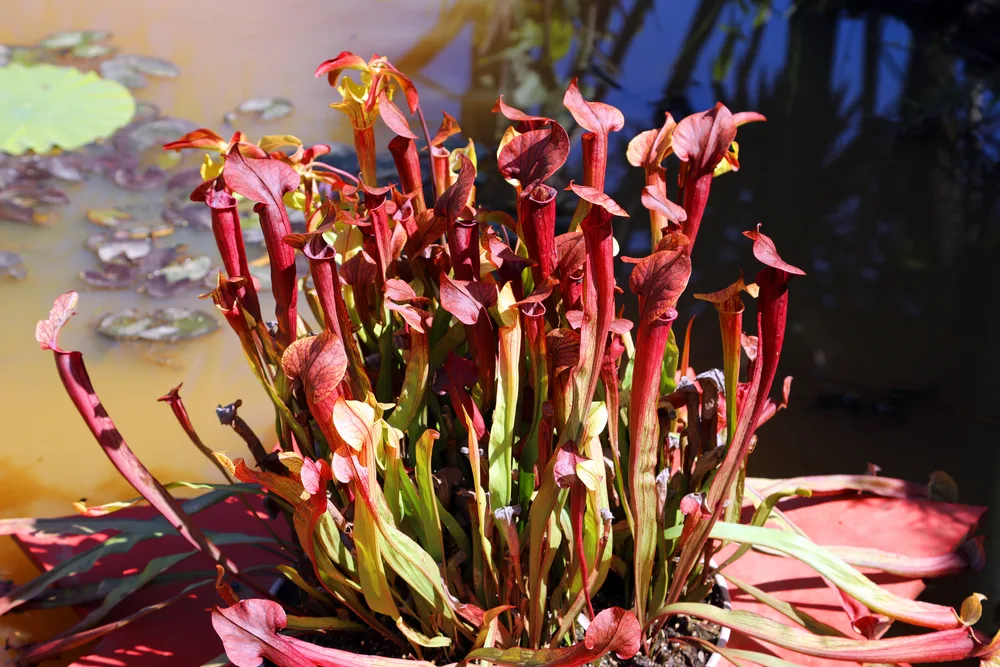
If you are considering adding other aquatic carnivorous plants to your pond, then Pitcher Plants are a great choice. They’re great for water features too. This bog plant has several species to choose from. All have interestingly shaped tube-like leaves that trap various types of prey. Cobra Lillies and Purple Pitcher Plants are the most common and are favorites among gardeners.
No matter the variety you opt for, you’ll be sure to create a spectacle around your pond or in your water feature.
Most enjoy full sun and can handle a range of conditions, as long as they don’t dry out. They grow best in USDA zones 6-8. You can grow them as marginal plants, ensuring the soil stays constantly wet, or you can plant them in submerged containers.
Finding plants for your pond or water feature can be tricky. To make your choices simpler, these ten suit all needs and requirements. Newbie gardeners or experienced green thumbs alike can take on growing all with ease.

Get the famous Rural Sprout newsletter delivered to your inbox.
Including Sunday musings from our editor, Tracey, as well as “What’s Up Wednesday” our roundup of what’s in season and new article updates and alerts.

